Floating salvinia: structure, value, cultivation and reproduction
Floating salvinia is a fern, a unique species of the genus Salvinia, growing in Russia. This aquatic plant can be found both in open water bodies and in artificial - ornamental pools of the landscape gardening landscape and home aquariums. Salvinia is quite popular due to its unpretentiousness, easy reproduction and beautiful appearance.
Content:
Appearance and structure
Salvinia has small, light green leaves shaped like an egg or an oval with a heart-shaped base. The stem can be up to fifteen centimeters long. There are three leaves on its node.
An interesting feature of the structure: two leaves float on the surface, and the third "hides" in the water and does not resemble its counterparts in appearance. It can be mistaken for a root, since it is divided into numerous thin filaments covered with the finest hairs.
Functions of the "underwater" sheet:
- It sucks nutrients out of the water.
- Serves as a storage place for nutrient reserves
- It acts as a counterweight to keep the plant in the correct position on the water.
The surface of the leaves on the outside is rough due to the fact that it is covered with bunches of processes with fluff at the ends. For salvinia, this is a necessary protection against wetting the leaves.
The way this fern swims is unusual. The unsinkability of the above-water part is provided by air bubbles, which are located in the hairs of the inner side of the leaves.
Application and meaning
In many countries, salvinia is considered a harmful aquatic weed.
Causes:
- Rapid reproduction of the plant on the water surface, as a result of which dense thickets literally block the access of light to the water column.
- The ecological balance of the reservoir is seriously disturbed.
However, the plant is successfully cultivated as an ornamental crop. Especially as an aquarium. Benefit from salvinia in the aquarium for many reasons is obvious.
The benefits of salvinia:
- The natural diet for shrimp is deposited on the pseudo-root of the plant.
- Fish fry find a reliable shelter in fern thickets.
- Salvinia creates shadow for others aquarium plantsthat cannot tolerate direct light.
- The top leaves are used by small aquarium dwellers such as newts as a resting place.
- The plant is capable of absorbing nitrates and blocking algae growth.
Cultivation and reproduction technique
Another interesting feature of the salvinia fern is the way it reproduces in the wild.
A leaf under water has special organs located at the base - sori. They are in the shape of a ball and are combined in clusters of four to eight pieces. Part of the sori contains microsporangia, part of it contains macrosporangia.
In autumn, the leaves of the plant fall off, and the sori sink to the bottom for wintering. In spring, their shells break through and sporangia emerge and germinate. Microspores develop and male gametophytes are obtained from microsporangia, and female gametophytes are obtained from macrosporangia.
Sperm cells develop from male cells, archegonia from female cells. A new plant is born as a result of fertilization.
In an aquarium, salvinia reproduces by division.
In the places where the whorls (nodes) of the leaves are attached, the stem begins to sprout new processes. They grow and separate from the mother plant, turning into a separate independent unit.
It should be noted that the vegetative way of reproduction is inherent in salvinia and in natural conditions. This happens in the summer.
The method of reproduction by division is an easier and faster method compared to the spore method.
Characteristic of floating salvinia:
- Salvinia floating - unpretentious plant.
- The level of water hardness and acidity is not important for her.
- Preferring water temperatures from 23 degrees, it is able to survive in cold weather.
- In this case, the plant will multiply more slowly and the leaves will not grow back to normal size.
Important points to consider:
- Constant change of aquarium water.
- Lighting.
Providing life-saving shade for many plants and fish, salvinia itself prefers bright, intense light. Although, in order to avoid burning the leaves, it is better to abandon the use of incandescent lamps. The ideal option is phytolamps or fluorescent illuminators. Their power must be at least three watts per liter.
Regular cleaning of fern thickets.
In warm clean water, the plant grows with lightning speed.
It is one thing to give shade to other aquarium inhabitants, and quite another to deprive them of their light completely. To maintain the balance of the aqua system, part of the overgrown leaves should be removed. This procedure must be carried out carefully, carefully watching so that shrimp and fry are not brought to the surface together with the plant.
What is floating salvinia: a harmful weed or a beneficial plant? Undoubtedly, the positive qualities of the fern overshadow the minor flaws. This means that salvinia can be recommended to beginner amateurs.



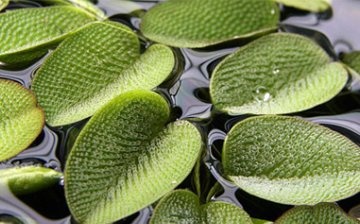
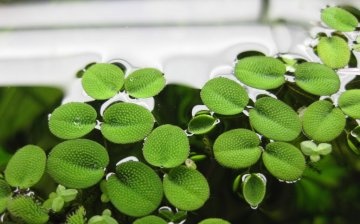
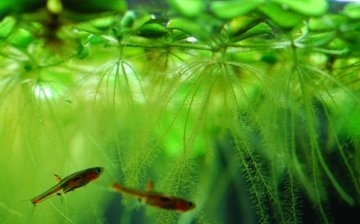
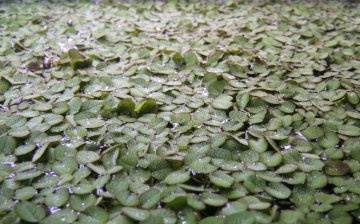




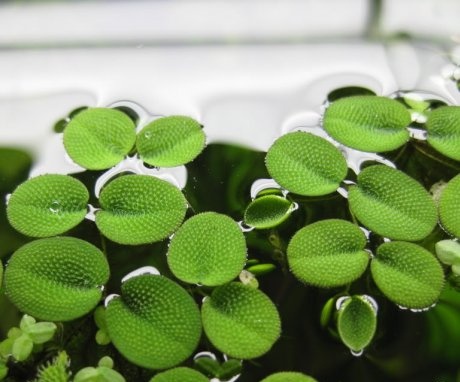
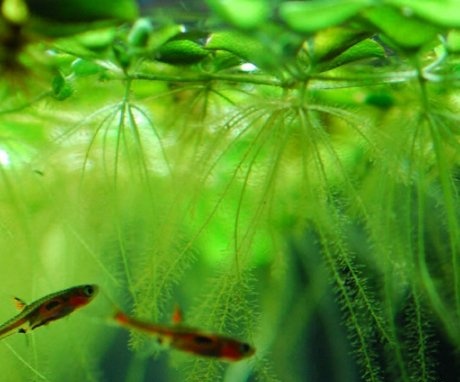
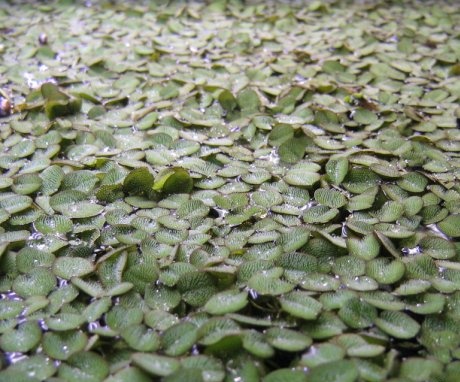
At one time, even when we did not have an aquarium, I just grew salvinia in transparent vessels with water - like the decor of a room. it was very beautiful, especially if you put transparent multi-colored glass on the bottom. I didn't know that this plant can be found in the wild, I always thought it was something exotic. Now I know a lot of interesting things about Salvinia, thanks!
All the time I thought that this was an aquarium plant, since many of my friends can find salvinia, which they bought in specialized stores. I don't think it will look beautiful in the pond, especially if there is a lot of it.
Today I brought it from a natural reservoir, I thought it was Ryaska, but it looks like Salvinia